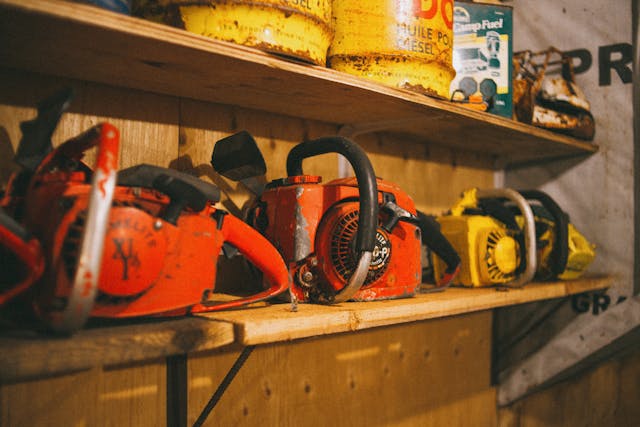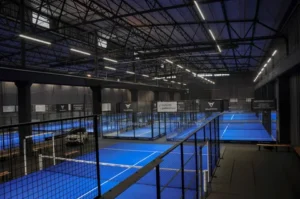AC vs. DC Industrial Motors: Repair Complexities and Cost Differences
In the realm of industrial machinery, electric motors are fundamental components that drive various applications, from conveyors to pumps. When it comes to selecting the right motor for your operation, understanding the differences between AC (Alternating Current) and DC (Direct Current) motors is crucial. Each type has its own set of benefits, complexities, and repair needs. This blog will explore the differences between AC and DC industrial electric motors, focusing on their repair complexities and cost differences. By gaining insights into these factors, you’ll be better equipped to choose the best solution for your facility’s electric motor repair and service requirements.
Understanding AC and DC Motors
AC Motors
AC motors are widely used in industrial applications due to their robustness and efficiency. They operate on alternating current, which means the flow of electricity periodically reverses direction. There are two primary types of AC motors:
- Synchronous Motors: These motors run at a constant speed, synchronized with the frequency of the electrical supply. They are often used in applications requiring precise speed control.
- Induction Motors: The most common type of AC motor, induction motors operate by inducing current in the rotor through electromagnetic induction. They are widely used in various applications due to their simplicity and durability.
DC Motors
DC motors, on the other hand, run on direct current, where the electrical flow is constant. They are known for their excellent speed control and high torque at low speeds. The primary types of DC motors include:
- Brushed DC Motors: These motors use brushes to transfer current to the rotor. They are easy to control and widely used in applications where precise speed control is necessary.
- Brushless DC Motors: These motors eliminate the need for brushes, resulting in less maintenance and longer lifespan. They are often used in applications requiring high efficiency and reliability.
Repair Complexities
When it comes to repairing AC and DC motors, the complexities involved can vary significantly based on their design and operational characteristics.
Repairing AC Motors
AC motors, particularly induction motors, are generally more straightforward in terms of repair. The common issues that arise include:
- Winding Failures: Over time, the windings in AC motors can fail due to overheating or insulation breakdown. Repairing this typically involves rewinding the motor, which can be complex but is a well-understood process.
- Bearing Replacement: AC motors often experience wear in their bearings due to continuous operation. Replacing bearings is a common repair task and can be done relatively easily.
- Electrical Issues: Problems such as short circuits or phase imbalances can affect motor performance. Diagnosing these issues may require specialized equipment but is generally manageable with proper tools and expertise.
Repairing DC Motors
DC motors can be more complex to repair due to their design, especially when it comes to brushed motors. Common repair challenges include:
- Brush and Commutator Wear: Brushed DC motors rely on brushes to maintain electrical contact with the rotor. Over time, both the brushes and the commutator can wear down, requiring replacement and careful reassembly.
- Controller Issues: Many DC motors use electronic controllers for speed regulation. If the controller fails, it may require replacement or recalibration, adding complexity to the repair process.
- Winding Repairs: Similar to AC motors, the windings in DC motors can fail. However, accessing and repairing these windings can be more intricate due to the motor’s design.
Cost Differences
When considering repairs, understanding the associated costs is essential. The costs can vary significantly between AC and DC motors due to their design and repair complexities.
AC Motor Repair Costs
AC motors are typically less expensive to repair than their DC counterparts. Several factors contribute to this:
- Simplicity of Design: The straightforward design of AC motors means that repairs often require less specialized knowledge and fewer components, leading to lower labor costs.
- Availability of Parts: AC motors are more commonly used in industrial applications, resulting in a greater availability of replacement parts. This availability can reduce lead times and costs associated with sourcing components.
- Ease of Maintenance: Regular maintenance practices, such as lubrication and periodic inspections, can help extend the life of AC motors, reducing long-term repair costs.
DC Motor Repair Costs
DC motors can be more expensive to repair, primarily due to their complexity:
- Specialized Components: The brushes, commutators, and controllers used in DC motors can be more costly to replace. Additionally, finding specialized parts may take longer, increasing downtime.
- Complex Repair Processes: Repairing DC motors often requires more labor-intensive processes, such as careful handling during brush and commutator replacement. This added complexity can lead to higher labor costs.
- Frequency of Repairs: While DC motors offer excellent speed control, their components may wear out more quickly than AC motors, leading to more frequent repairs and associated costs.
Comparing Efficiency and Lifespan
While repair costs are important, it is also essential to consider the efficiency and lifespan of AC and DC motors when making decisions about repairs or replacements.
Efficiency
- AC Motors: Generally, AC motors are more efficient for high-power applications, especially in industrial settings. Their design allows for higher efficiency at larger scales, making them suitable for continuous operation.
- DC Motors: DC motors excel in applications requiring precise speed control and high torque at low speeds. However, they may be less efficient than AC motors for continuous, high-power applications.
Lifespan
- AC Motors: With proper maintenance, AC motors can have a long lifespan, often exceeding 15 years. Their robust design and ease of repair contribute to their longevity.
- DC Motors: The lifespan of DC motors can be shorter, particularly for brushed models. Regular maintenance is critical to ensuring optimal performance and extending their operational life.
Making the Right Choice for Your Operation
When deciding between AC and DC motors for your industrial application, consider the following factors:
- Application Requirements: Evaluate the specific needs of your operation. If precise speed control and high torque are essential, a DC motor may be more suitable. For high-power applications, an AC motor is often the better choice.
- Repair and Maintenance Considerations: Understand the repair complexities and costs associated with each type of motor. If frequent repairs are anticipated, choosing a motor with a simpler repair process may be beneficial.
- Efficiency and Lifespan: Consider the efficiency and lifespan of the motor in relation to your operational demands. Investing in higher-quality motors may lead to long-term savings through reduced maintenance and energy costs.
- Local Repair Options: Look for local industrial electric motor repair services to ensure quick response times and access to expertise when repairs are needed. Having a reliable repair partner can significantly reduce downtime and keep your operations running smoothly.
Conclusion
Understanding the differences between AC and DC industrial motors is essential for making informed decisions about repairs and replacements. While AC motors tend to be more straightforward to repair and less expensive in the long run, DC motors offer advantages in speed control and torque. Each motor type comes with its own set of complexities and costs associated with repairs, and the choice between them should be guided by the specific needs of your operation. By carefully evaluating these factors and partnering with a reliable repair service, you can optimize your motor performance and ensure the longevity of your equipment. In the competitive industrial environment of today, making the right choice can lead to significant operational efficiencies and cost savings.












